Abstract
The epidemiological studies which have had significant impact on the setting of National Ambient Air Quality Standards (NAAQSs) were performed more than twenty years ago. Most of the more recent studies have been seriously flawed in their design and/or execution because they neglected to account for important variables such as: pollutant exposures other than those from ambient air; the influence of personal activity on pollutant uptake; host responsiveness; and the separate contributions of recent transient peak exposures and long-term chronic exposures on the effects endpoints. For particulate pollutants, the influence of composition and size distribution has also received too little consideration. In order to address these deficiencies, research and methods development are needed on: indices for particulate exposures; identification of exposures relevant to the effects; improved indices of effects; acquisition of response data; identification of exposed populations; and identification of susceptible subgroups. Approaches to these needs are discussed, along with brief reviews of several recent studies that have focused on critical issues of concern, made the necessary efforts to characterize the relevant exposures of the populations being studied, and demonstrated human responses to ambient pollutants at current exposure levels.
Full text
PDF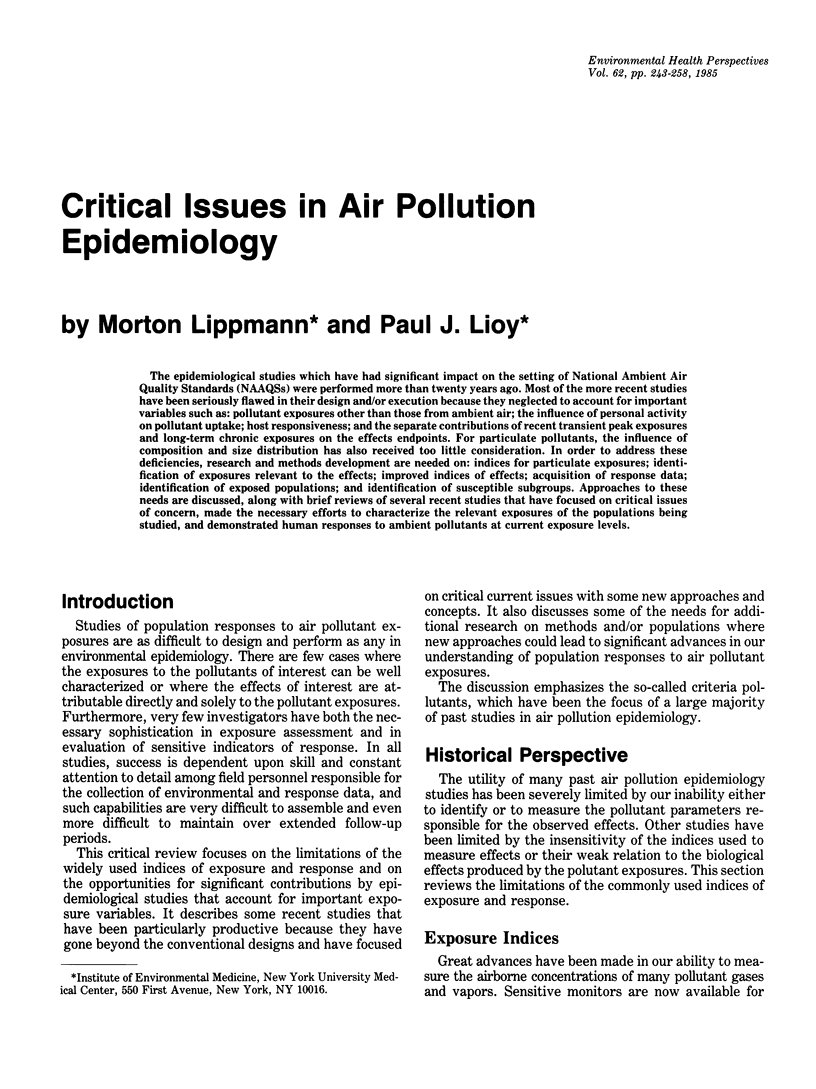
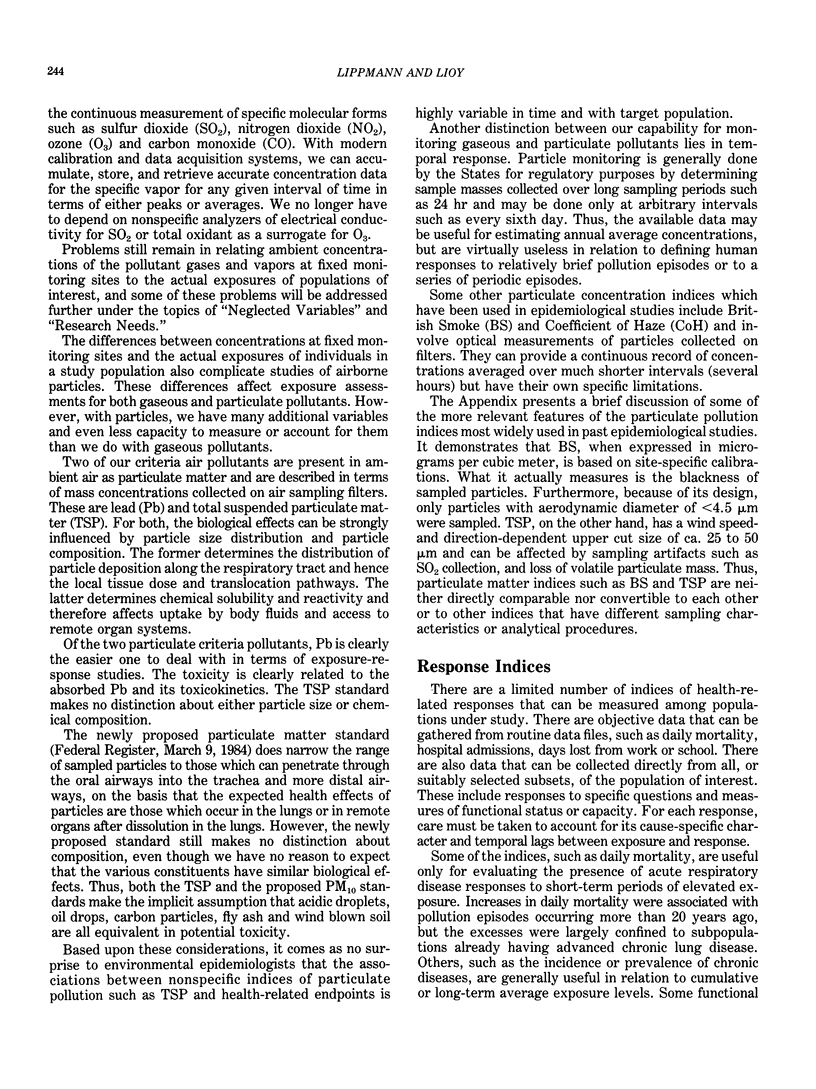
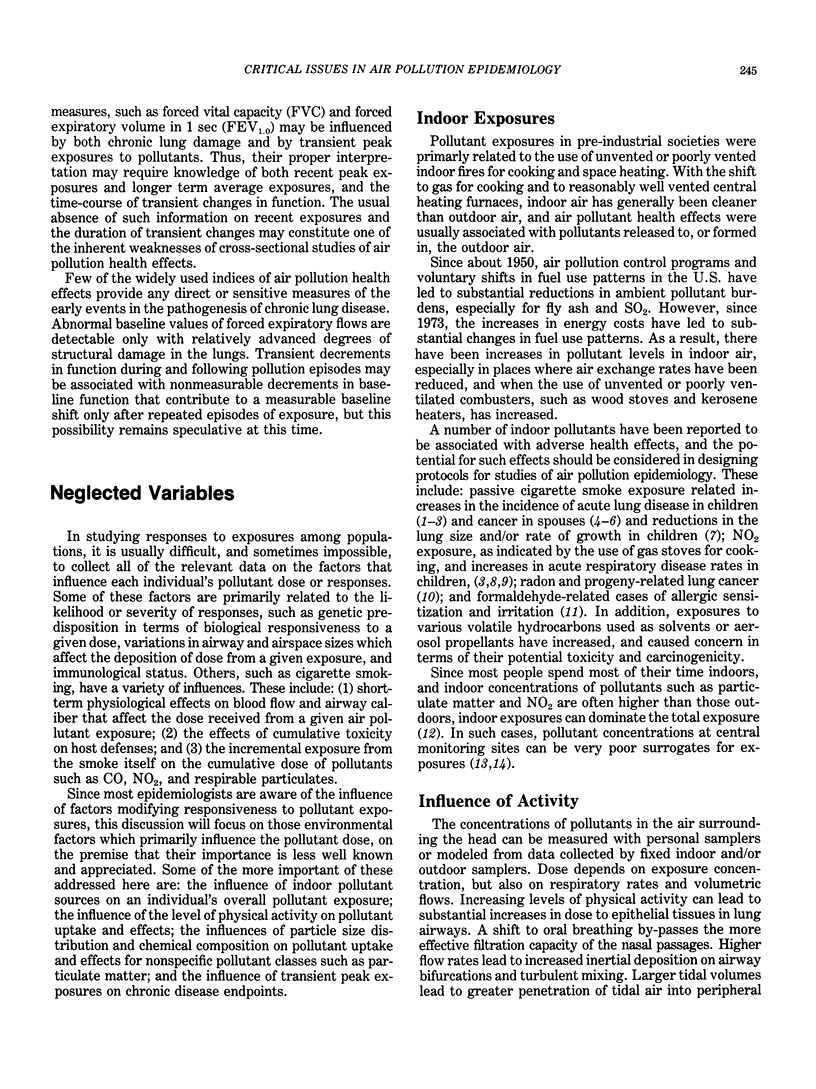
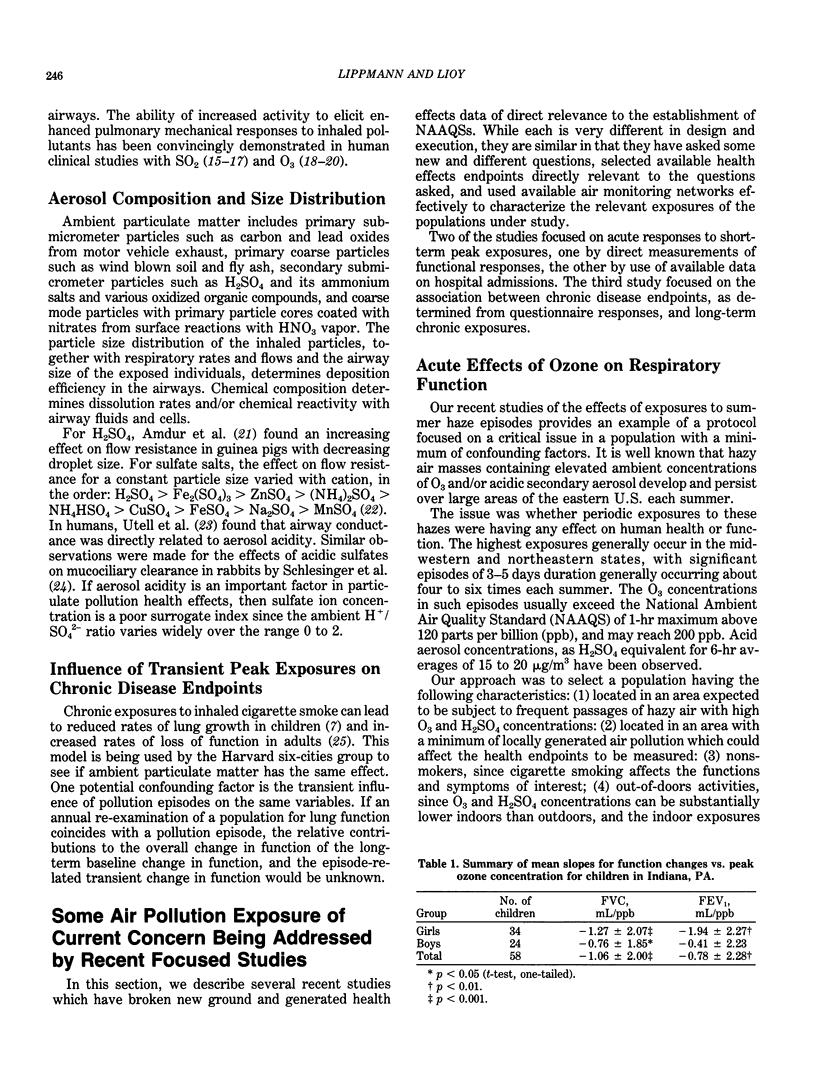
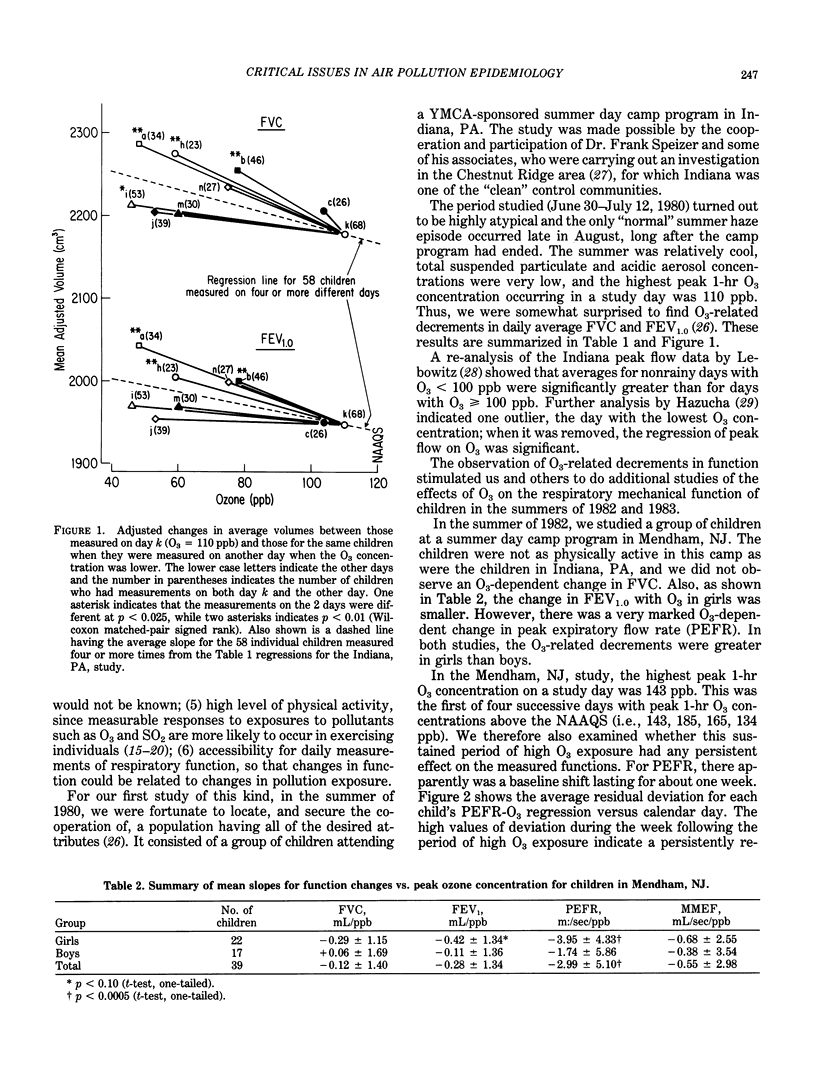
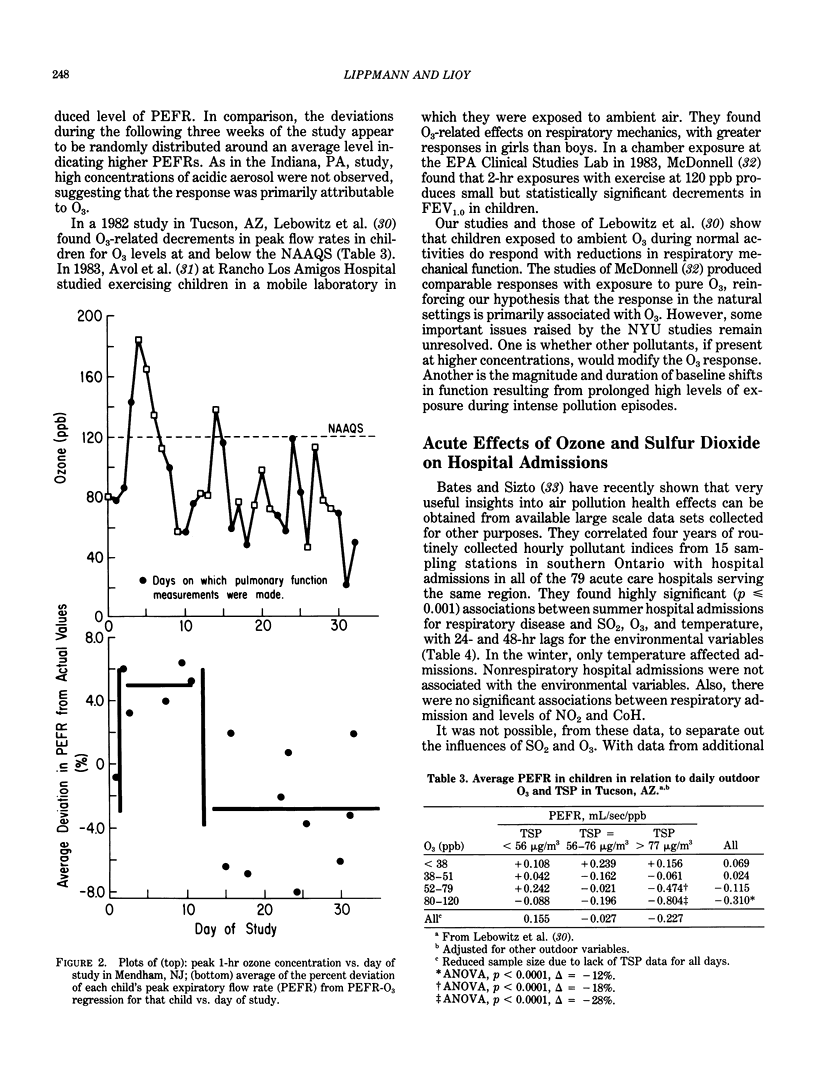
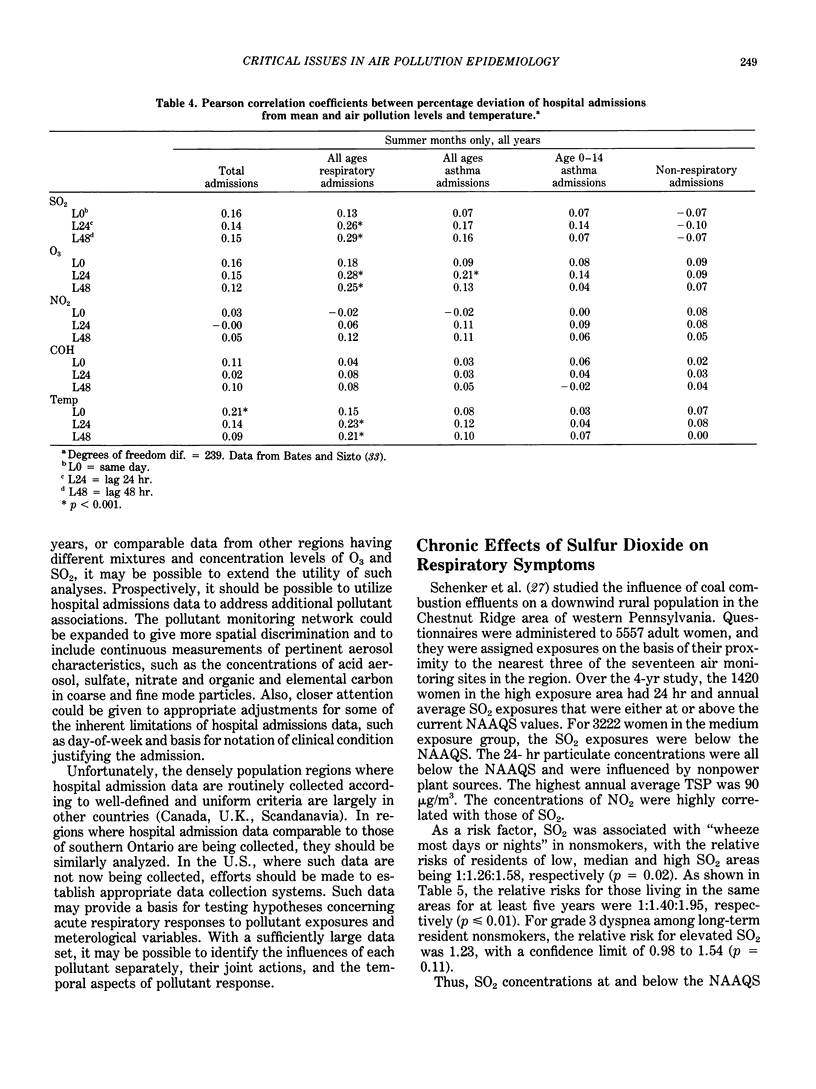
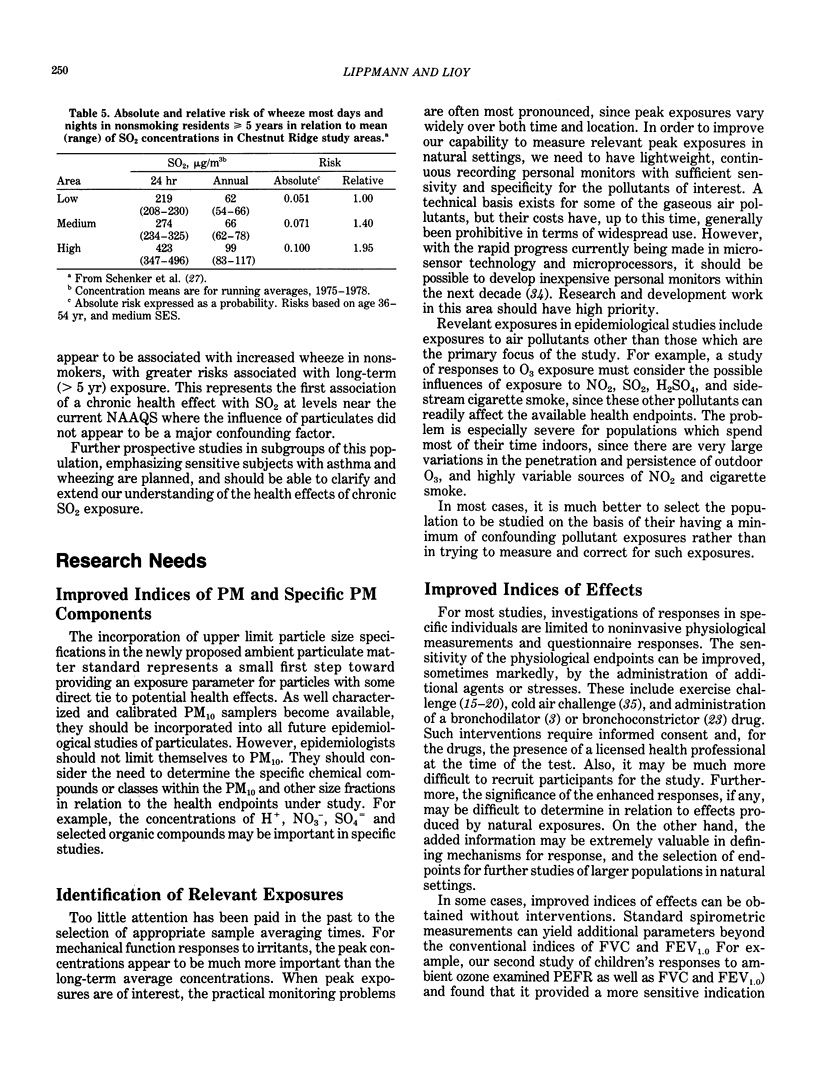
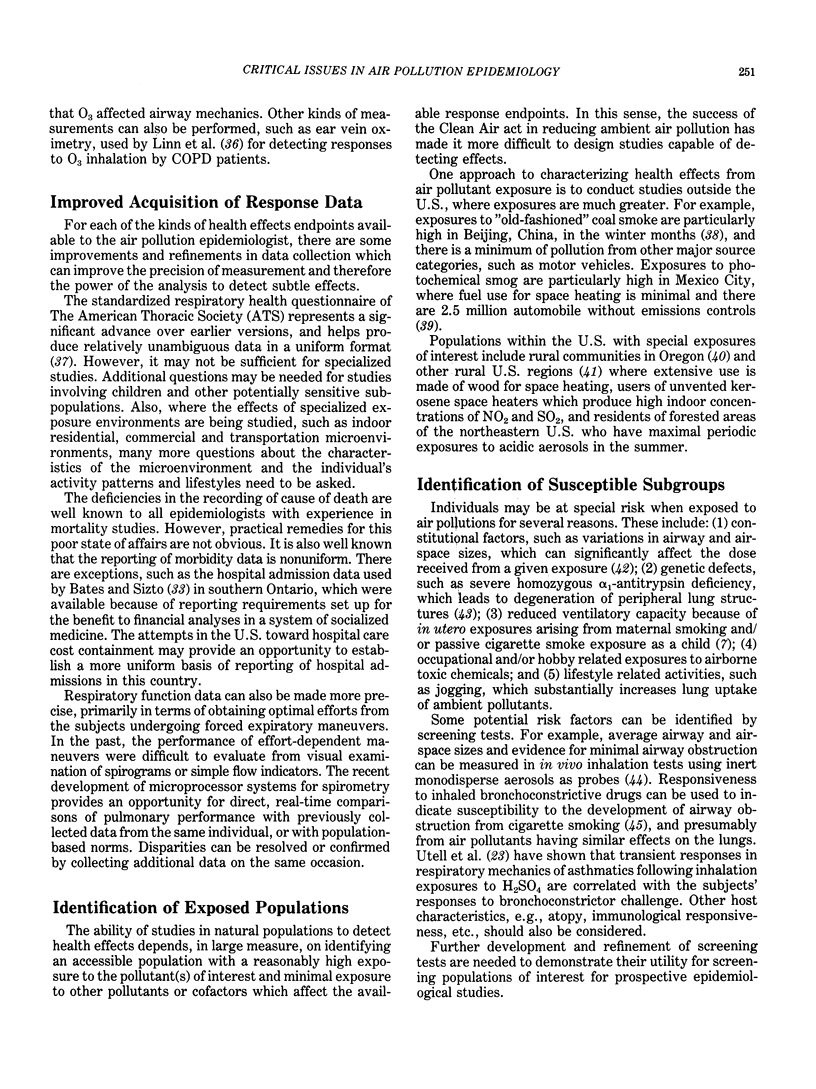
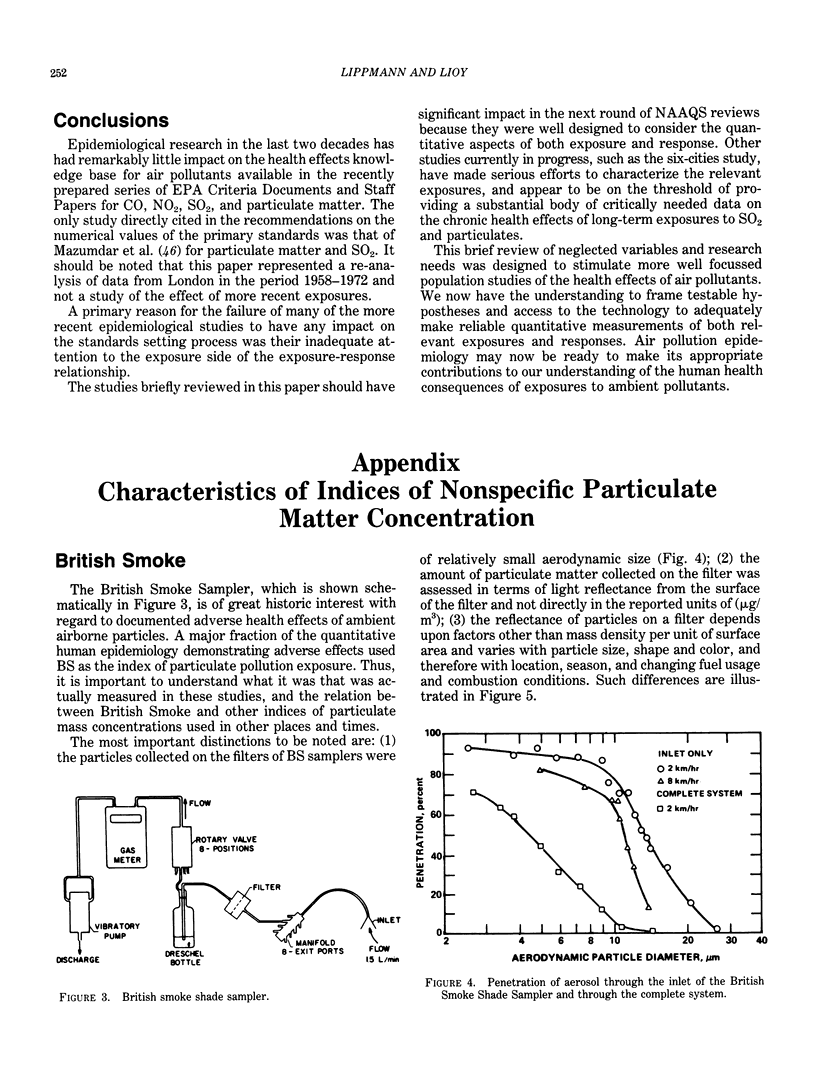
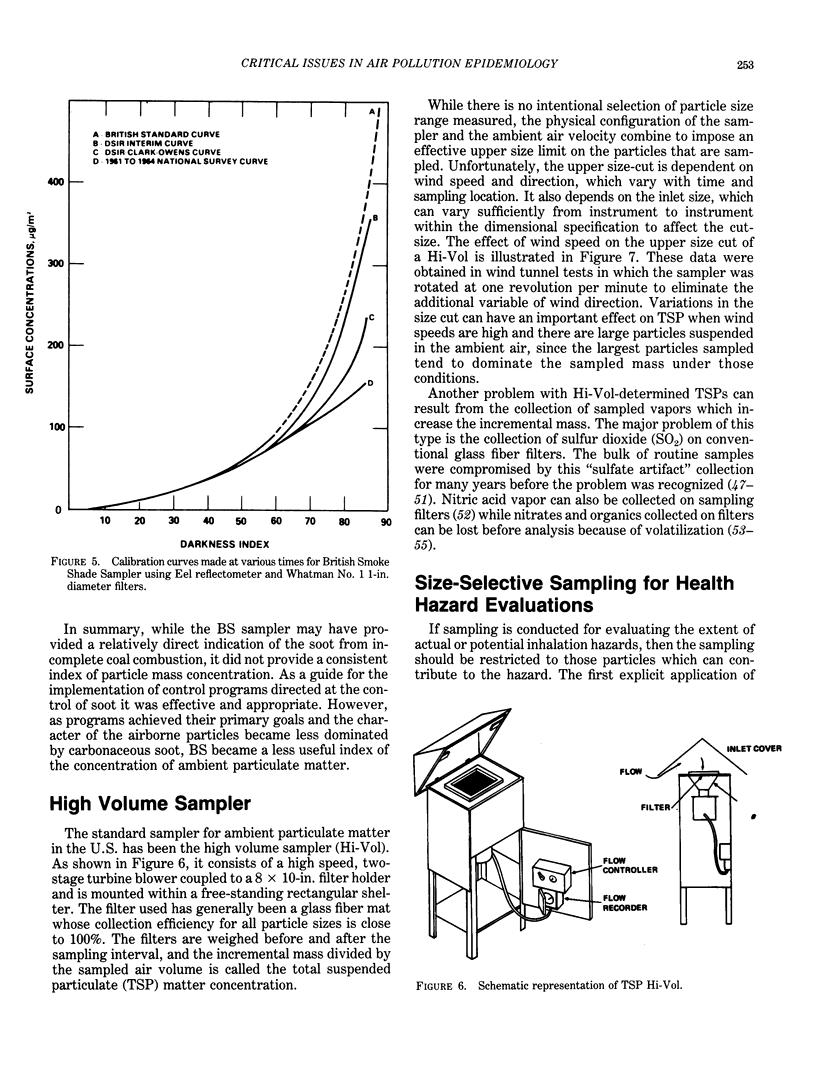
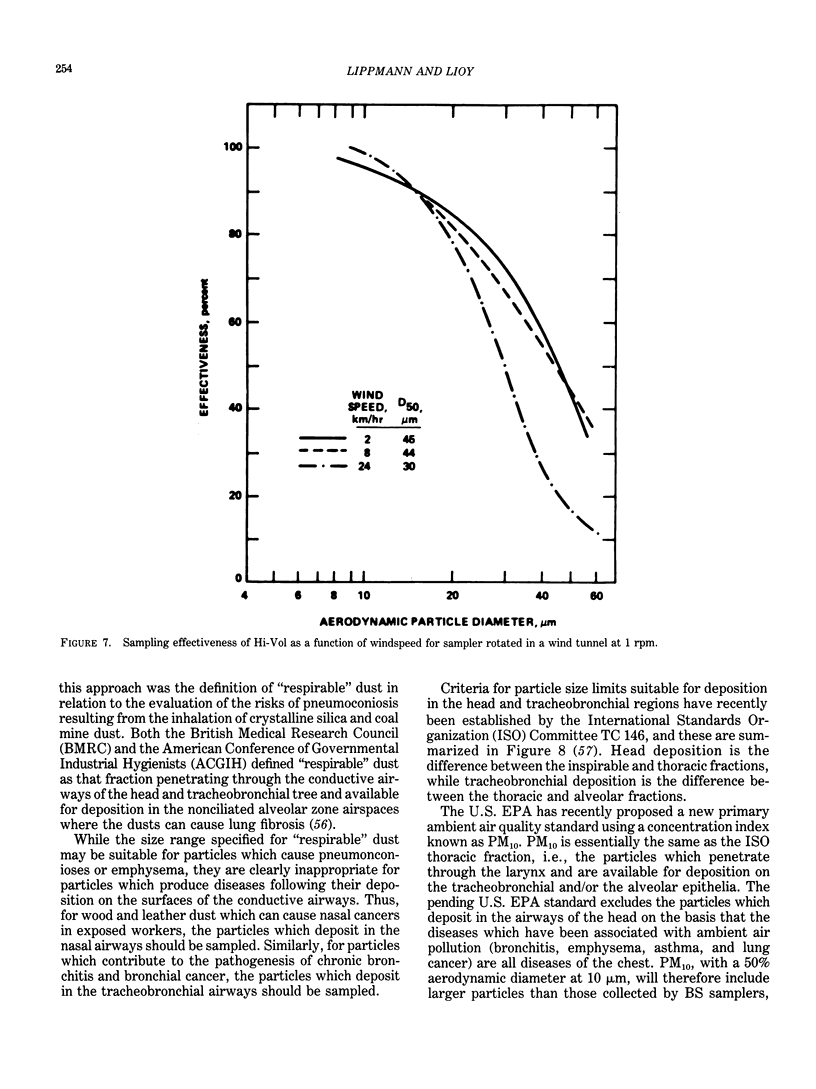
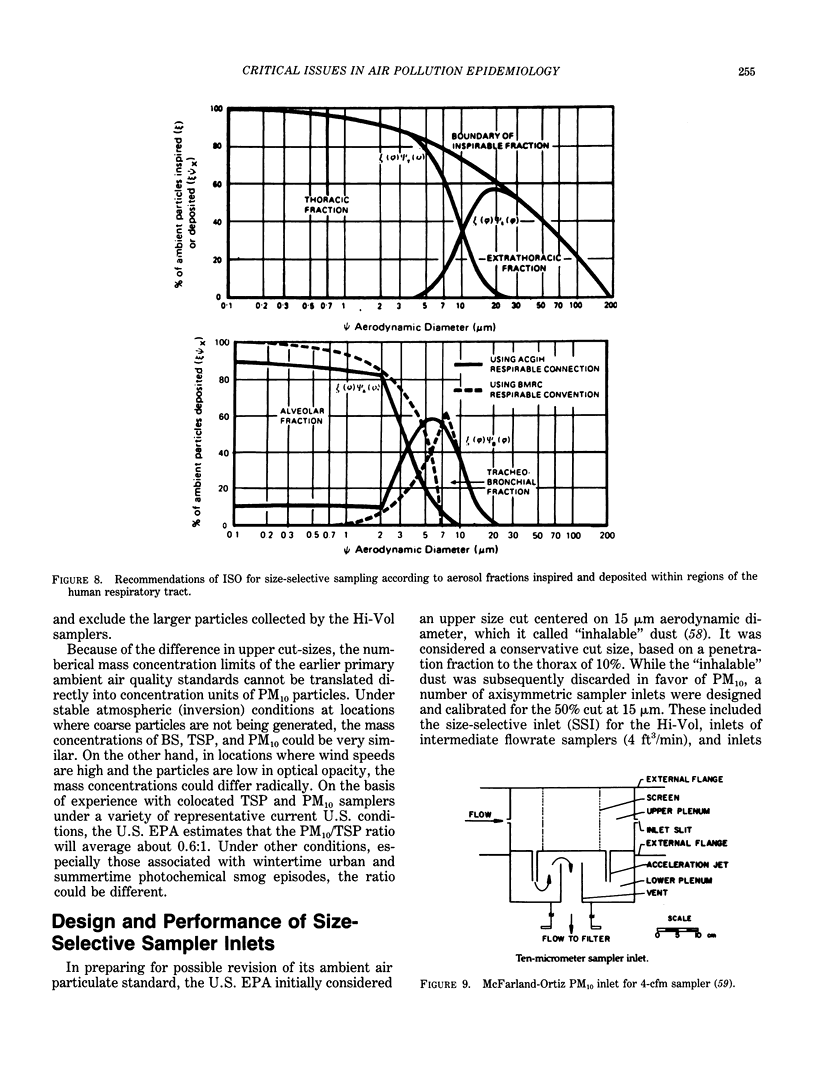
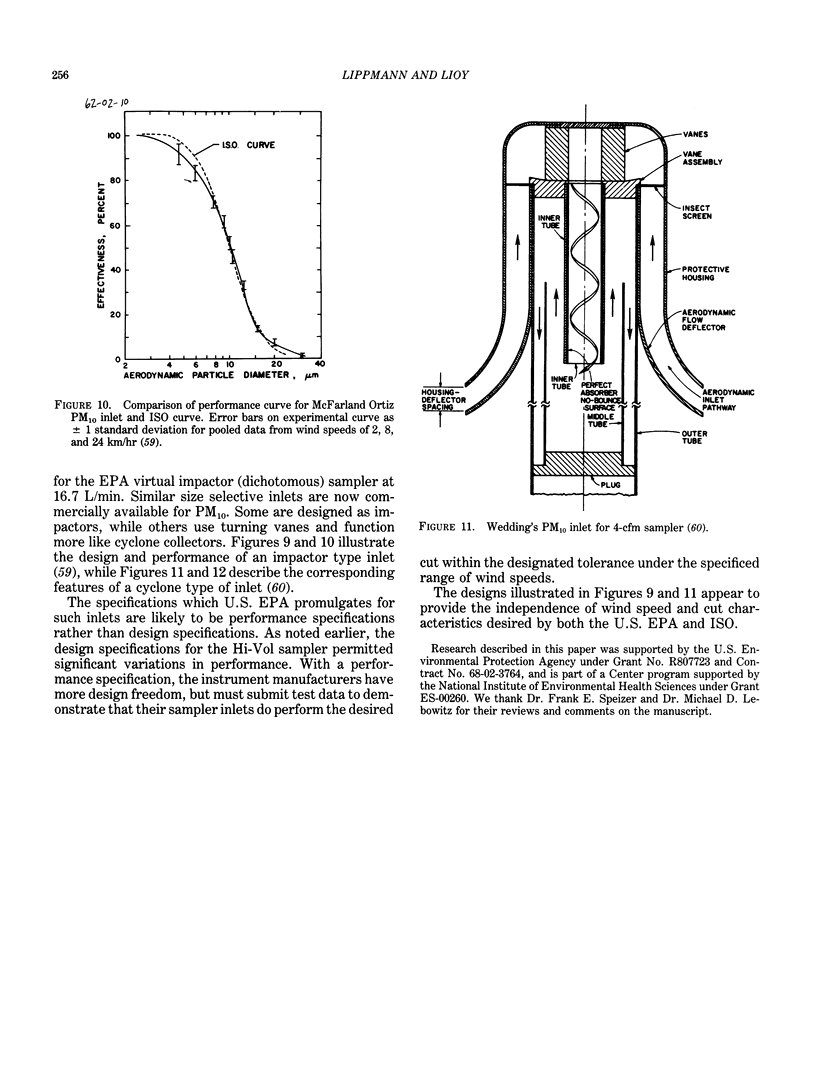
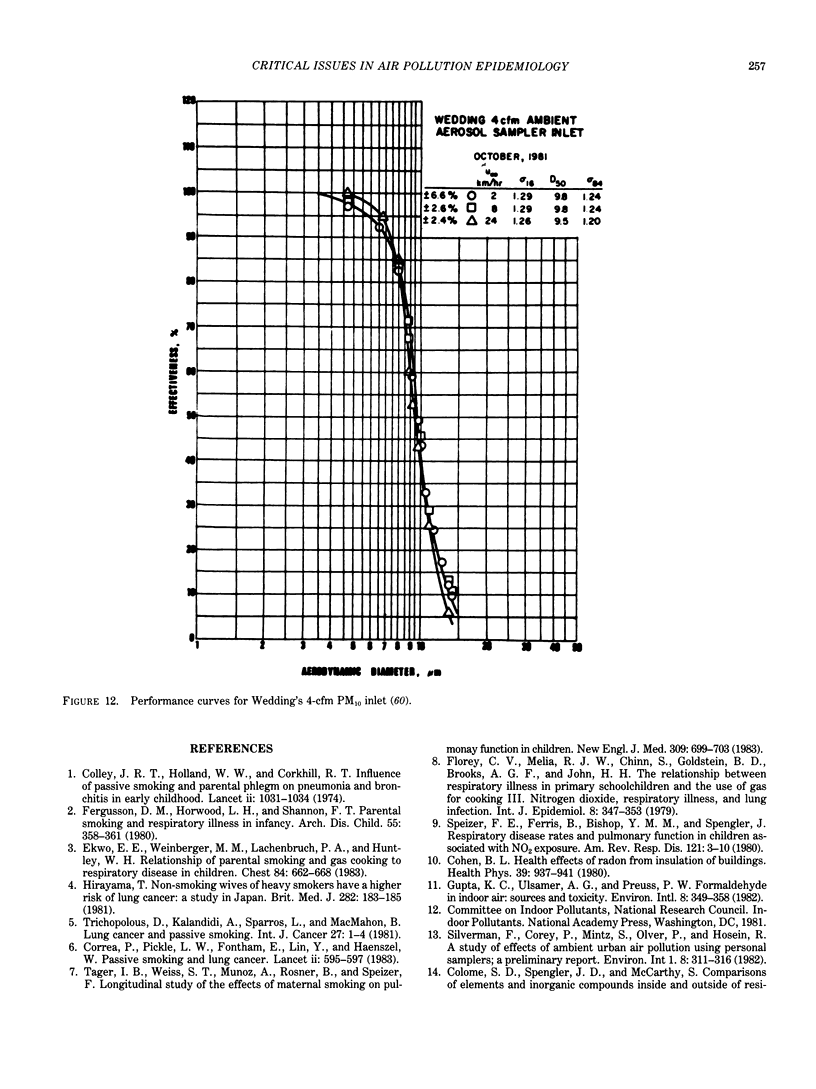
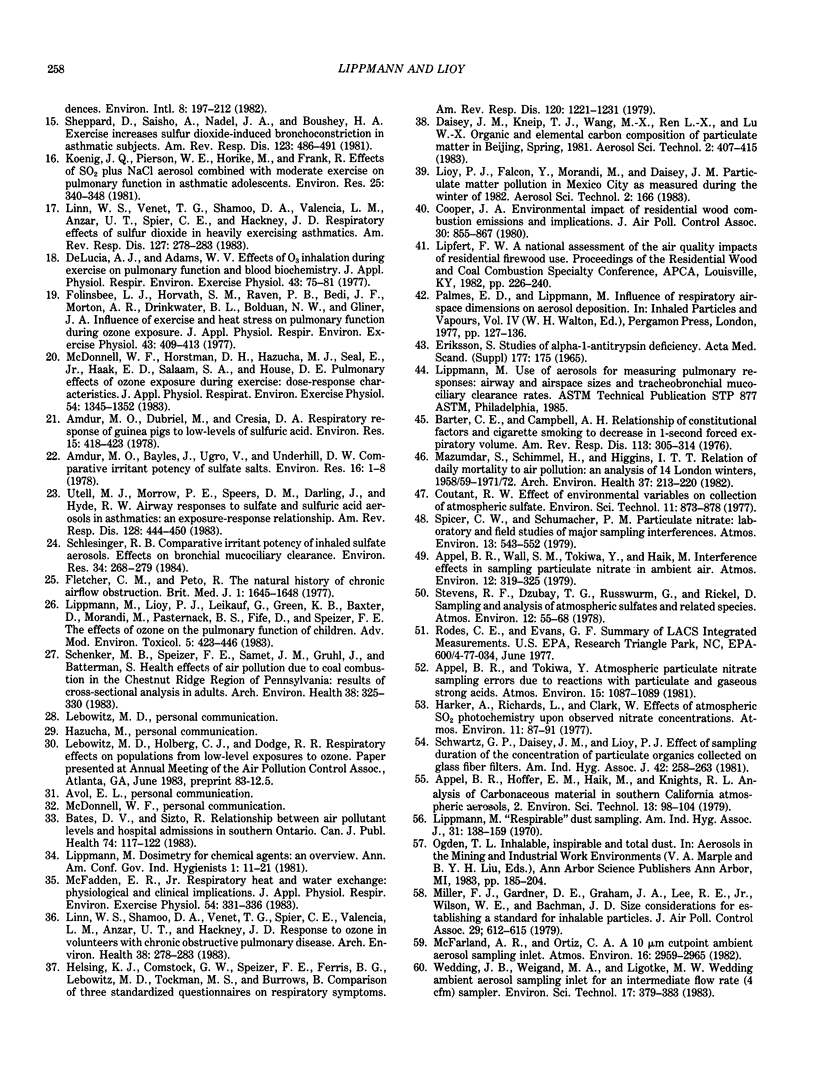
Selected References
These references are in PubMed. This may not be the complete list of references from this article.
- Amdur M. O., Bayles J., Ugro V., Underhill D. W. Comparative irritant potency of sulfate salts. Environ Res. 1978 Jul;16(1-3):1–8. doi: 10.1016/0013-9351(78)90135-4. [DOI] [PubMed] [Google Scholar]
- Amdur M. O., Dubriel M., Creasia D. A. Respiratory response of guinea pigs to low levels of sulfuric acid. Environ Res. 1978 Jun;15(3):418–423. doi: 10.1016/0013-9351(78)90122-6. [DOI] [PubMed] [Google Scholar]
- Barter C. E., Campbell A. H. Relationship of constitutional factors and cigarette smoking to decrease in 1-second forced expiratory volume. Am Rev Respir Dis. 1976 Mar;113(3):305–314. doi: 10.1164/arrd.1976.113.3.305. [DOI] [PubMed] [Google Scholar]
- Cohen B. L. Health effects of radon from insulation of buildings. Health Phys. 1980 Dec;39(6):937–941. doi: 10.1097/00004032-198012000-00007. [DOI] [PubMed] [Google Scholar]
- Colley J. R., Holland W. W., Corkhill R. T. Influence of passive smoking and parental phlegm on pneumonia and bronchitis in early childhood. Lancet. 1974 Nov 2;2(7888):1031–1034. doi: 10.1016/s0140-6736(74)92148-5. [DOI] [PubMed] [Google Scholar]
- DeLucia A. J., Adams W. C. Effects of O3 inhalation during exercise on pulmonary function and blood biochemistry. J Appl Physiol Respir Environ Exerc Physiol. 1977 Jul;43(1):75–81. doi: 10.1152/jappl.1977.43.1.75. [DOI] [PubMed] [Google Scholar]
- Ekwo E. E., Weinberger M. M., Lachenbruch P. A., Huntley W. H. Relationship of parental smoking and gas cooking to respiratory disease in children. Chest. 1983 Dec;84(6):662–668. doi: 10.1378/chest.84.6.662. [DOI] [PubMed] [Google Scholar]
- Fergusson D. M., Horwood L. J., Shannon F. T. Parental smoking and respiratory illness in infancy. Arch Dis Child. 1980 May;55(5):358–361. doi: 10.1136/adc.55.5.358. [DOI] [PMC free article] [PubMed] [Google Scholar]
- Fletcher C., Peto R. The natural history of chronic airflow obstruction. Br Med J. 1977 Jun 25;1(6077):1645–1648. doi: 10.1136/bmj.1.6077.1645. [DOI] [PMC free article] [PubMed] [Google Scholar]
- Florey C. V., Melia R. J., Chinn S., Goldstein B. D., Brooks A. G., John H. H., Craighead I. B., Webster X. The relation between respiratory illness in primary schoolchildren and the use of gas for cooking--III. Nitrogen dioxide, respiratory illness and lung infection. Int J Epidemiol. 1979 Dec;8(4):347–353. doi: 10.1093/ije/8.4.347. [DOI] [PubMed] [Google Scholar]
- Folinsbee L. J., Horvath S. M., Raven P. B., Bedi J. F., Morton A. R., Drinkwater B. L., Bolduan N. W., Gliner J. A. Influence of exercise and heat stress on pulmonary function during ozone exposure. J Appl Physiol Respir Environ Exerc Physiol. 1977 Sep;43(3):409–413. doi: 10.1152/jappl.1977.43.3.409. [DOI] [PubMed] [Google Scholar]
- Helsing K. J., Comstock G. W., Speizer F. E., Ferris B. G., Lebowitz M. D., Tockman M. S., Burrows B. Comparison of three standardized questionnaires on respiratory symptoms. Am Rev Respir Dis. 1979 Dec;120(6):1221–1231. doi: 10.1164/arrd.1979.120.6.1221. [DOI] [PubMed] [Google Scholar]
- Hirayama T. Non-smoking wives of heavy smokers have a higher risk of lung cancer: a study from Japan. Br Med J (Clin Res Ed) 1981 Jan 17;282(6259):183–185. doi: 10.1136/bmj.282.6259.183. [DOI] [PMC free article] [PubMed] [Google Scholar]
- Koenig J. Q., Pierson W. E., Horike M., Frank R. Effects of SO2 plus NaCl aerosol combined with moderate exercise on pulmonary function in asthmatic adolescents. Environ Res. 1981 Aug;25(2):340–348. doi: 10.1016/0013-9351(81)90036-0. [DOI] [PubMed] [Google Scholar]
- Linn W. S., Shamoo D. A., Venet T. G., Spier C. E., Valencia L. M., Anzar U. T., Hackney J. D. Response to ozone in volunteers with chronic obstructive pulmonary disease. Arch Environ Health. 1983 Sep-Oct;38(5):278–283. doi: 10.1080/00039896.1983.10544007. [DOI] [PubMed] [Google Scholar]
- Linn W. S., Venet T. G., Shamoo D. A., Valencia L. M., Anzar U. T., Spier C. E., Hackney J. D. Respiratory effects of sulfur dioxide in heavily exercising asthmatics. A dose-response study. Am Rev Respir Dis. 1983 Mar;127(3):278–283. doi: 10.1164/arrd.1983.127.3.278. [DOI] [PubMed] [Google Scholar]
- Lippmann M. "Respirable" dust sampling. Am Ind Hyg Assoc J. 1970 Mar-Apr;31(2):138–159. doi: 10.1080/0002889708506223. [DOI] [PubMed] [Google Scholar]
- Mazumdar S., Schimmel H., Higgins I. T. Relation of daily mortality to air pollution: an analysis of 14 London winters, 1958/59-1971/72. Arch Environ Health. 1982 Jul-Aug;37(4):213–220. doi: 10.1080/00039896.1982.10667567. [DOI] [PubMed] [Google Scholar]
- McDonnell W. F., Horstman D. H., Hazucha M. J., Seal E., Jr, Haak E. D., Salaam S. A., House D. E. Pulmonary effects of ozone exposure during exercise: dose-response characteristics. J Appl Physiol Respir Environ Exerc Physiol. 1983 May;54(5):1345–1352. doi: 10.1152/jappl.1983.54.5.1345. [DOI] [PubMed] [Google Scholar]
- McFadden E. R., Jr Respiratory heat and water exchange: physiological and clinical implications. J Appl Physiol Respir Environ Exerc Physiol. 1983 Feb;54(2):331–336. doi: 10.1152/jappl.1983.54.2.331. [DOI] [PubMed] [Google Scholar]
- Schenker M. B., Speizer F. E., Samet J. M., Gruhl J., Batterman S. Health effects of air pollution due to coal combustion in the Chestnut Ridge Region of Pennsylvania: results of cross-sectional analysis in adults. Arch Environ Health. 1983 Nov-Dec;38(6):325–330. doi: 10.1080/00039896.1983.10545815. [DOI] [PubMed] [Google Scholar]
- Schlesinger R. B. Comparative irritant potency of inhaled sulfate aerosols--effects on bronchial mucociliary clearance. Environ Res. 1984 Aug;34(2):268–279. doi: 10.1016/0013-9351(84)90095-1. [DOI] [PubMed] [Google Scholar]
- Sheppard D., Saisho A., Nadel J. A., Boushey H. A. Exercise increases sulfur dioxide-induced bronchoconstriction in asthmatic subjects. Am Rev Respir Dis. 1981 May;123(5):486–491. doi: 10.1164/arrd.1981.123.5.486. [DOI] [PubMed] [Google Scholar]
- Speizer F. E., Ferris B., Jr, Bishop Y. M., Spengler J. Respiratory disease rates and pulmonary function in children associated with NO2 exposure. Am Rev Respir Dis. 1980 Jan;121(1):3–10. doi: 10.1164/arrd.1980.121.1.3. [DOI] [PubMed] [Google Scholar]
- Tager I. B., Weiss S. T., Muñoz A., Rosner B., Speizer F. E. Longitudinal study of the effects of maternal smoking on pulmonary function in children. N Engl J Med. 1983 Sep 22;309(12):699–703. doi: 10.1056/NEJM198309223091204. [DOI] [PubMed] [Google Scholar]
- Utell M. J., Morrow P. E., Speers D. M., Darling J., Hyde R. W. Airway responses to sulfate and sulfuric acid aerosols in asthmatics. An exposure-response relationship. Am Rev Respir Dis. 1983 Sep;128(3):444–450. doi: 10.1164/arrd.1983.128.3.444. [DOI] [PubMed] [Google Scholar]


